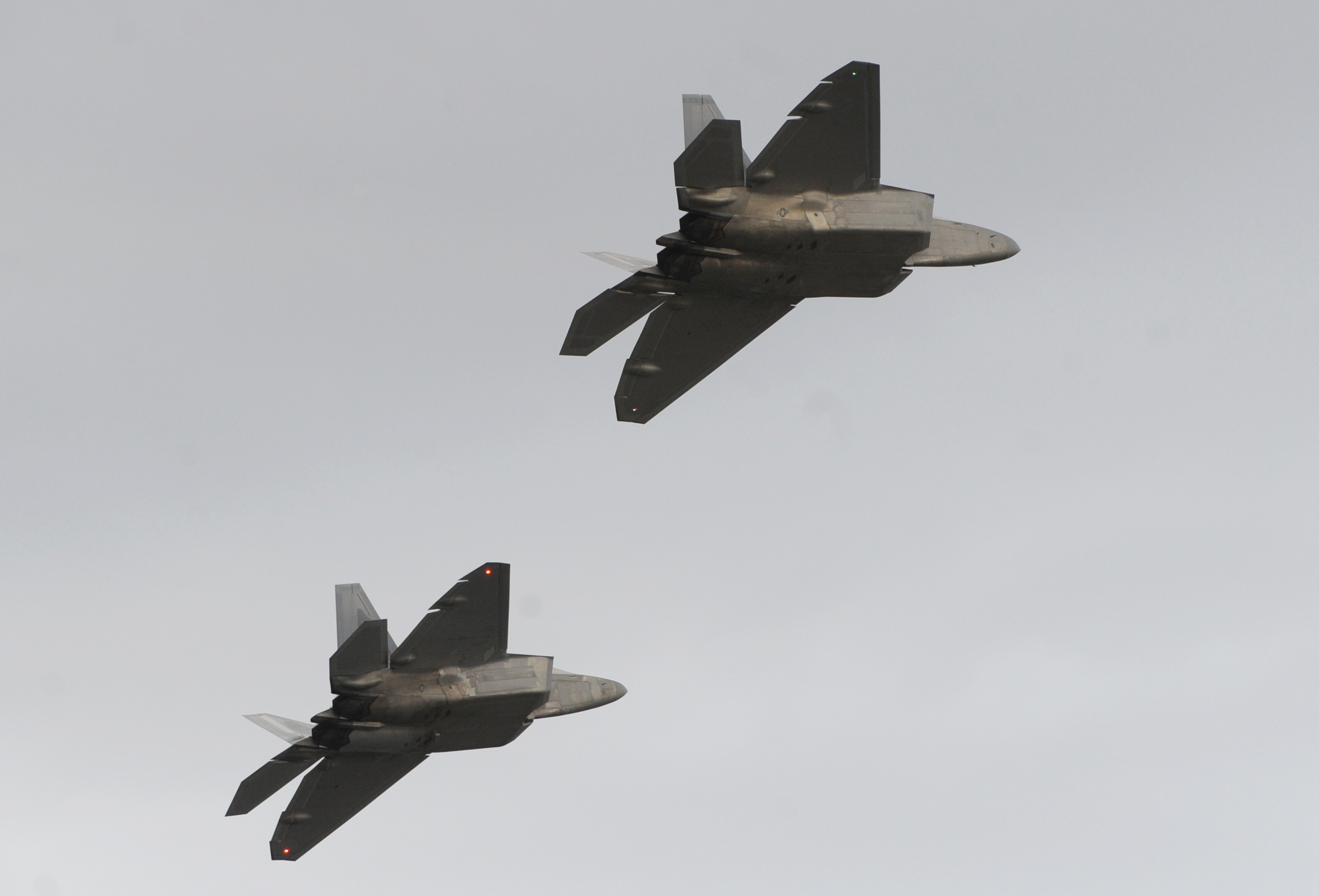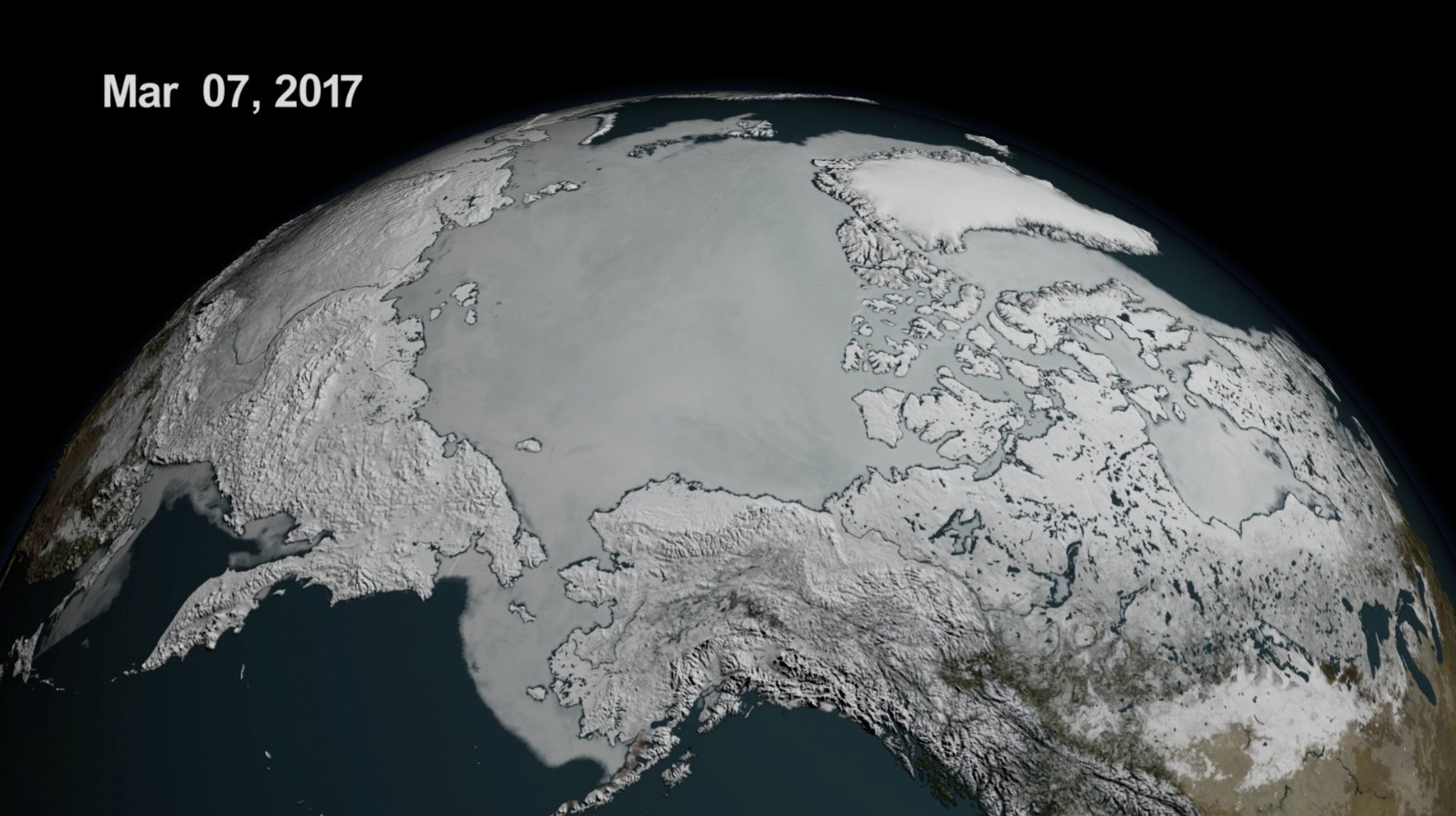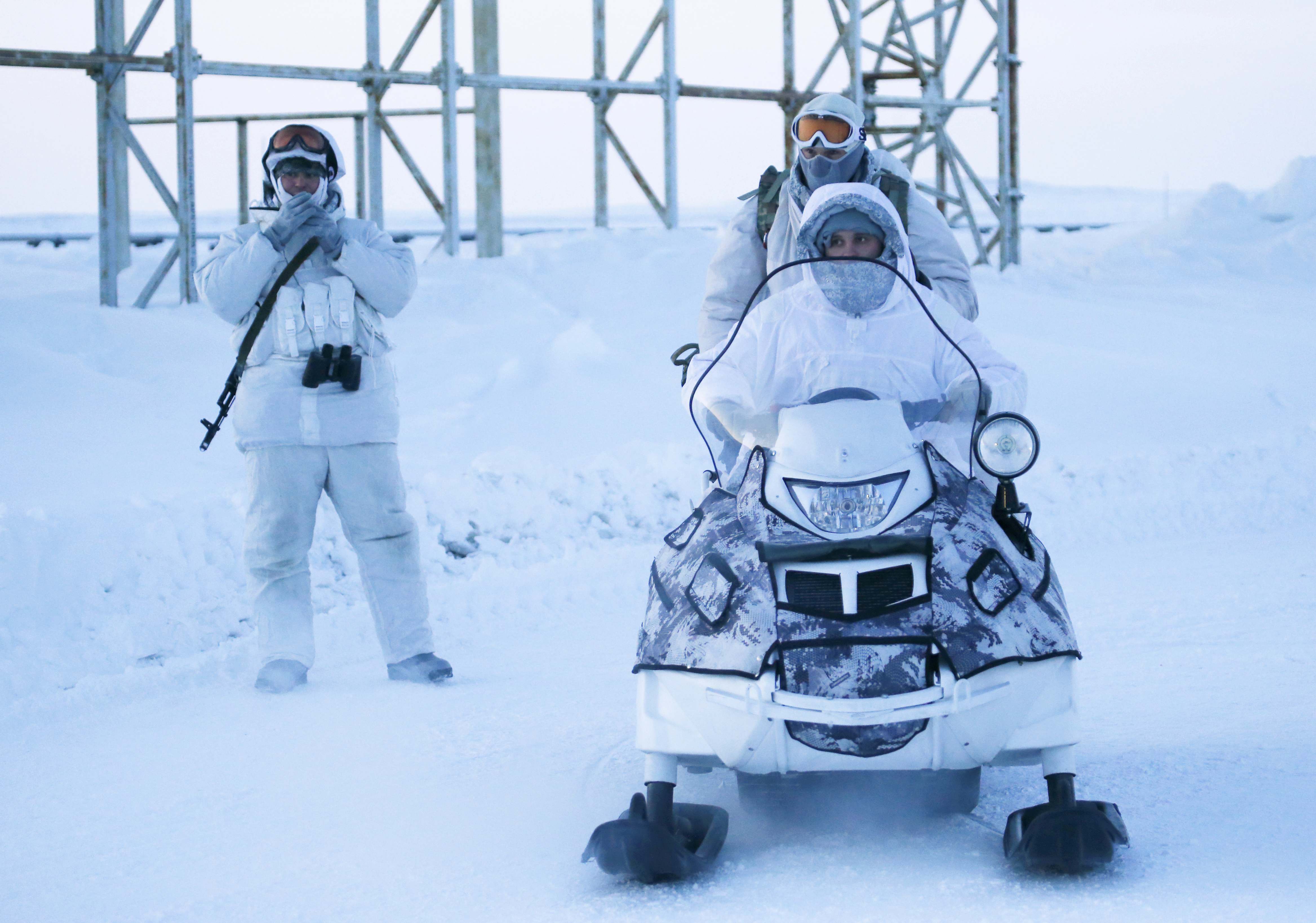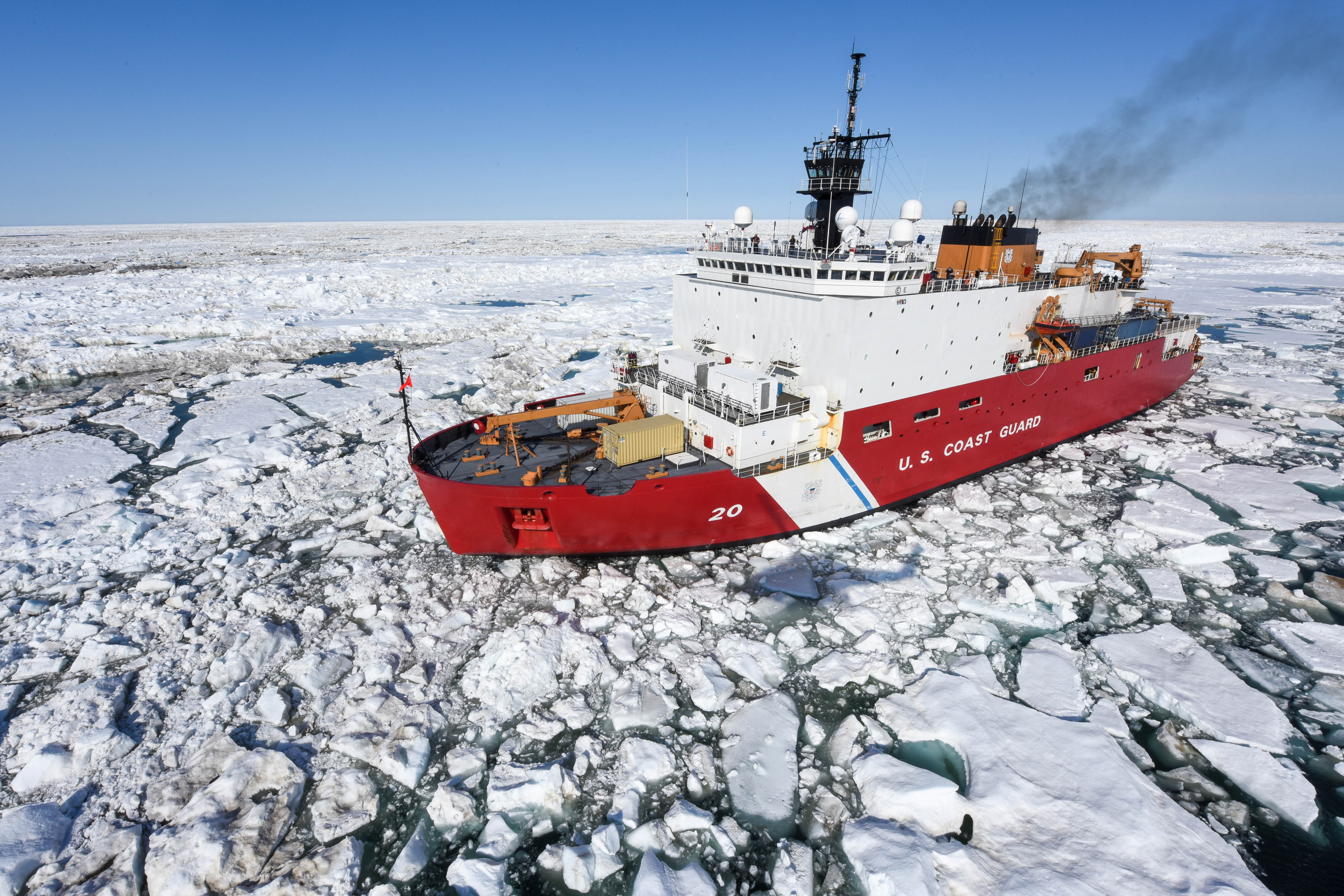Shrinking polar cap creates a ‘fourth coast’ for Colorado-based Northern Command

As the Arctic ice continues to melt at record-breaking rates, the U.S. military is tasked with protecting newly opened, navigable sea lanes from competing nations.
Most significantly, the Pentagon has its eyes set on Russia, whose mutual claims to the Arctic could allow for the establishment of a new military strategic position against the U.S. The responsibility for addressing these new threats and challenges to America’s “fourth coast” falls squarely in the lap of Northern Command in Colorado Springs.
Because the pattern of melting in the Arctic and its navigation possibilities are still relatively recent, military and government officials have yet to approve specific plans to address concerns in the Far North.
Underlying military planning, though, is NASA data on maximum sea ice extent — a measurement of the longest ice cap in the Arctic before summer warming begins. Collected in conjunction with the Boulder-based National Snow and Ice Data Center on March 7, the data showed that this year’s maximum extent was an all-time record low, about 37,000 square miles below the previous record set in 2015 and 471,000 miles smaller than the average maximum ice extent seen between 1981 and 2010.
“We caution to put too much emphasis on one year, but, with a declining trend, there is less ice on average. Record lows become more likely in the long run,” said Walt Meier, a research scientist at the NASA Goddard Space Flight Center in Maryland. “This year fits that pattern and could be an indication of a long-term trend.”
[Arctic sea ice reaches record-low maximum extent for 3rd winter in a row]
The difficulty in proving that trend is scientists’ inability to predict the maximum wintertime and minimum summertime sea ice extents year to year.
“We’re pretty confident the measurements won’t look like they did in 1985, but we can’t say much more than that,” said Meier, whose primary research interest is on the interaction between Arctic sea ice and the climate.

Another factor, on which NASA has less data, is sea ice thickness.
Meier explained that usually, the average ice thickness was 3 meters or more and that normally, in the summer, the ice would melt a meter and a half to 2 meters. But, now, NASA has recorded ice starting in the 1 1/2 – to 2-meter range at the beginning of the summer, which could lead to total melting.
Without more complete information, though, NASA cannot definitively attribute the loss of sea ice to climate change.
“One thing that should be done but is a challenge, is to quantify the uncertainties of what we know and what we don’t know and the probabilities of those uncertainties, and to convey those uncertainties,” Meier said. “We can provide that data to the policymakers and decision makers who need it.”
Addressing security in Arctic
Despite uncertainties in the trends that NASA’s data could support, the federal government and the military have begun to address the economic and national security implications of open water in the Arctic. In its 2016 report to Congress on Arctic strategy, the Pentagon acknowledged its duty to continue to model space, air, sea surface, weather and ocean trends that affect operations in the Arctic as a part of their designated area of responsibility in North America.
The opening of a northern maritime avenue of approach to North America as a result of diminishing sea ice adds an additional national security concern to Northern Command’s laundry list, the Pentagon said.
On April 7, Northern Command and NORAD boss Gen. Lori Robinson told the Senate Armed Services Committee about the role of her troops in the Arctic. Arctic ice, Robinson said, has long “enhanced North American security by providing a physical barrier in the northern approaches to the United States and Canada.”
Less ice, though, opens a path to America’s rivals that Robinson told senators was a “strategic avenue of approach.”
Northern Command, in conjunction with the combined American-Canadian agency tasked with protecting air sovereignty in Northern America, NORAD, is increasingly focused on blocking that path.
Robinson’s address followed a March 23 report from a Council on Foreign Relations task force that advocated U.S. military presence in the Arctic.
“We definitely have opportunities and challenges up there, but the rapid melting of the ice cap and access in Northwest Passage are raising issues of national security and maritime domain awareness,” said task force co-chair Thad Allen, a former Coast Guard commandant.
Those opportunities, most notably, include potentially sizable oil and gas resources and new shipping routes. The corresponding challenges, Allen outlined, include the lack of oil spill responses, search and rescue capabilities and illegal fishing operations.
The task force suggested that President Donald Trump aggressively pursue the Obama administration’s three priorities for the United States in the Arctic: “improving economic living conditions in Arctic communities; Arctic Ocean safety, security and stewardship; and addressing the impacts of climate change.”
Critical to this pursuit for the Trump administration, according to the report, is capitalizing on interagency cooperation between the Department of Interior and the EPA to regulate natural habitat; the Department of Commerce and the National Oceanic and Atmospheric Administration to oversee fisheries; and the State Department, Department of Homeland Security and Northern Command and NORAD to contribute to international cooperation.
Need for cooperation
Historically, international relations in the Arctic have “enjoyed a refreshingly cooperative spirit largely insulated from the political tensions in the rest of the world,” according to the task force’s report. Contemporary political tensions, however, have intervened in the once apolitical region.
Although Robinson did not mention it in her testimony, the task force’s report directly addressed the need for international cooperation in Arctic policy, specifically in anticipating and preparing for advances by Russia, in particular, as well as other rival nations like China. Fueling this apprehension toward Russia is their actions in Crimea, Ukraine and Chechnya as well as Russia’s fear of NATO growth.
[Putin’s Russia in biggest Arctic military push since Soviet fall]
As the country with the longest Arctic coastline, Russia has a big economic and military stake in the region. Ninety-five percent of Russia’s natural gas and 75 percent of its oil is produced in the Arctic. Because of Soviet-era government policies that encouraged people to move north to work in the oil and mining industries, a big chunk of the Russian population still resides in the Arctic.

Allen said America needs to view the growing tension with urgency, but not alarmism. Defense Secretary James Mattis echoed Allen’s take on Russia’s Arctic presence. In his confirmation hearings, Mattis said the Arctic is “key strategic terrain” and that he will “prioritize the development of an integrated strategy for the Arctic” to address the “aggressive steps” Russia is taking to increase its presence there, according to Foreign Policy magazine.
When asked about Russia’s intentions in the Arctic in an interview with CBS, Mattis said, “I don’t know,” but reiterated the need for the U.S. to curtail Russian expansion. Despite the task force’s recommendation to strengthen international cooperation with all Arctic states, Mattis is skeptical of a symbiotic relationship with Russia. “There’s decreasing number of areas where we can engage cooperatively and increasing number of areas where we’re going to have to confront Russia,” Mattis said during his confirmation hearing. “I have very modest expectations about areas of cooperation with Mr. Putin.”
In northern waters, Russia has advantages over U.S. military might that’s on display elsewhere, including new airbases, ground forces, missiles and refurbished facilities on its Arctic coast and on many of its northernmost islands.

Allen mainly pointed to America’s anemic fleet of icebreakers, ships that can crack through ocean ice, as a concern. Until — or even if — Arctic waters are ice-free, ships that clear lanes through the ice pack will be crucial.
Russia has several icebreakers in the region. America has one, the Coast Guard’s aging Cutter Polar Star, which was built in the 1970s and has already exceeded its planned service life. The task force wants six new American ice breakers.
“Russia obviously has a larger icebreaker fleet, which puts them at an advantage in accessing the Arctic,” said Allen. “We have to figure out what our responsibilities are in the Arctic and what infrastructure is needed to meet those responsibilities, so we can stay secure. We’re not in a race, though.”
The expansion of the United States’ Arctic infrastructure might not keep pace with the changing region, though. Robinson said the shifting ice requires a new level of readiness for her command. The military now must be “prepared to operate in this harsh environment,” Robinson said.
Distributed by Tribune Content Agency, LLC.